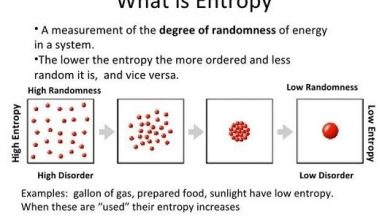What is pricing/ purpose/importance/factors/strategies/break even point
What Is Pricing?
Pricing is the process of defining the monetary value to be charged to the customer for a product, good or service .
It is a fundamental variable for the functioning of any type of business.
Pricing must be considered in such a way as to provide a positive return to the company and its investors and, at the same time, guarantee the competitiveness of the business and customer satisfaction .
To do so, it must consider internal aspects (cost of goods, indirect expenses, administrative expenses, etc.) and external aspects (taxes, competition, economic crises , tax regimes, etc.).
Price is present in all aspects of our lives: in rent, medical expenses, bus fare, bank account fees and essential items .
Driving down a well-paved road comes at a price: the toll. Having treated water at home too: the sanitation company’s tariff.
Some prices are regulated by government agencies. Others follow free market dynamics .
Many of consumers’ purchasing decisions are based on price.
It is the customer who judges whether or not it is worth paying the price for that product or service.
Therefore, pricing plays a fundamental role in the strategy of any business.
Product Pricing
Product pricing must take into account tangible and intangible elements.
The first step is to map direct and indirect expenses and costs .
Here it is worth mentioning that cost represents everything that the company spends to maintain its main activity.
Examples are: raw materials, goods, rent of the stock shed, among others.
Expenses are expenses necessary for the organization to function , but which are not directly related to its core activity.
Examples are: cleaning material, administrative, water and electricity bills, among others.
Having defined the costs and expenses, the entrepreneur needs to calculate a reasonable profit margin.
The percentage varies according to the segment in which the company operates, market conditions, sales volume, among other aspects.
Finally, it is necessary to consider the market and ask the following question: are consumers willing to pay this price?
Service Pricing
Pricing for services, to some degree, is similar to pricing for products, but there are some differences.
The provision of services involves a series of intangible and subjective aspects that must be taken into account.
Services are not easily comparable or standardized, largely depending on the skills of the professionals who provide them.
In this context, the first step in pricing services is to set the price for the hour worked by professionals.
This can be done by considering the average work accidents with sick leave, and unpaid leave for personal matters. In the latter case, the firm may cut the employee’s salary divided by the number of hours.
But there are other costs that must be considered, such as travel and materials, among others.
A service company also has fixed and variable expenses , so these are data that need to be taken into account.
The next steps include applying the profit margin and analyzing whether the market is able to pay for the service.
What Is Pricing For?
In general, pricing serves as a pillar of support for all the objectives of an organization.
Goals can be general, such as:
- increase in sales
- profit increase
- Increase in market share
- Survival
Or specifics like:
- Increase in the rate of return on investment
- Positioning a new product on the market
- Price war with the competition.
It is from the formation of prices that a company defines strategies in search of its objectives, which, ultimately, is to generate profits.
Not by chance, price is part of the 4 Ps of marketing : price, product, place and promotion.
In addition to the correct pricing (price), it is necessary to offer benefits that are perceived by the customer (product), in efficient sales channels (place) and with good marketing strategies (promotion).
Correct pricing directly impacts an organization’s economic and financial health and its long-term sustainability .
When done in a planned manner, considering different variables, it allows the manager to even predict future results.
What Is The Difference Between Price And Value?
Price and value are terms that can even be used synonymously, but have very different meanings.
In a commercial negotiation , price is what you pay in exchange for a good, product or service.
In other words, it is the designation of a monetary value for a good, product or service offered for sale.
Value, on the other hand, is the benefits and attributes of that product or service in the eyes of the customer .
It concerns how much the consumer is willing to pay for a particular good or service, that is, value has subjective and intangible characteristics.
In commercial negotiation, the customer buys services or products and their associated benefits (value).
The company sells a “value package” to its customer and charges them a price, which can be cash or other goods.
Realize that value is more than just numbers (cost, expense, expense, profit, etc.).
It involves abstract elements, such as trust, added value, differentiated service, after-sales, among others.
A good example of value perceived by customers is artisanal and organic products.
As a rule, they cost much more than industrialized products, but consumers accept to pay the price due to the perception of value .
Another example that helps explain the difference between the concepts is the entertainment industry’s collectible toys.
The release of new films in a franchise, for example, has the potential to increase sales of characters‘ toys, even if prices are three or four times higher.
The same goes for collectors of rare items.
It’s the perceived value that makes a vintage car lover pay more for a rudimentary 1960s car at the expense of a zero kilometer.
How Important Is The Pricing Process?
The pricing process involves a series of variables, many of them outside the company’s control.
Internally, there are several elements that influence the formation of prices , such as:
- Cost of Goods Sold (COGS)
- Direct and indirect expenses
- Training and experience of the team of collaborators
- Profit margin
- Return on Investment, among others.
But there are also external issues that impact the company, many of which are even unpredictable.
Among them we can list:
- Taxes and government regulations
- Competition
- Demand for the product or service
- Business cycles
- Crises, among others.
The pricing process must be designed taking into account objective aspects, but also subjective issues.
These are characteristics of the consumer, the competition and the company itself.
Regarding market behavior, for example, low prices do not always result in increased sales.
For some types of products and services, price is an important indicator of quality .
If it’s too low, it might seem “too good to be true”.
In other cases, no.
A sale motivated by seasonality or competition can attract more customers and culminate in good results.
Success will depend on how the manager conducts the pricing process.
What Factors Can Influence Pricing?
Even after being defined, the price is constantly updated , and may increase or decrease.
The changes occur under the influence of different factors, among which we can highlight:
Raw Material Cost
Inputs and raw materials (or goods, in the case of reseller companies) may suffer price variations at the supplier .
The causes are the most diverse: law of supply and demand, exchange variation, increase in energy and fuel costs , among others.
These are changes that generally affect pricing and can be passed on to the final customer , especially in companies in the commercial segment.
Process Changes
Outsourcing , automation, logistics optimization, among other procedural changes, also influence prices.
A reduction in costs and expenses, for example, makes room in the profit margin to eventually offer discounts and attract more customers.
Negotiation With Large Customers
Customers who buy in large quantities can also influence prices, as they have bargaining power .
Tax Regime
Another factor that weighs on the pricing of products and services is the tax regime, which may have more or less weight on business activity .
There are simplified regimes, adopted by micro and small companies, and more sophisticated regimes, aimed at medium and large companies.
For each case there is a different type of tax collection.
Good tax planning can relieve the company within the limits of the law, a factor that also reflects in the pricing of products and services.
Main Pricing Strategies For Products And Services
So far, you have seen that the pricing process involves complex variables, many of which are difficult to measure.
Find out below the most common pricing strategies adopted by entrepreneurs from different segments.
Based On Cost
Pricing based on cost is stipulated having as a parameter the Cost of Goods Sold (COGS) and other direct and indirect expenses.
As an example, imagine that a store has come to the conclusion that the total expense of a certain merchandise is R$ 100.00 (including costs and expenses) and that the reasonable profit margin is 30%.
The price, in this case, is R$130.00: R$100+(100*30%).
Based On Perceived Value
Pricing based on perceived value puts the customer first .
To work, the company needs to know the target audience it wants to reach and establish the price from their point of view.
It means finding out how consumers recognize the company’s products and services, which aspects they deem relevant and how much they are willing to pay for them.
Based On Competition
Competitive pricing is one of the most used strategies, especially by companies that buy goods to resell .
Large retail chains , such as wholesalers and supermarkets, do this a lot.
As they sell products with little added value , the gain is usually in volume and not in margin.
Price is one of the main factors that lead the customer to decide to buy at supermarket A or B.
Pricing based on competition, however, does not mean copying the price of other players, but having a sense of market behavior.
So much so that the price may vary according to the product or service differentials, be it location, personalized service, delivery, after-sales, among others.
Based On Seasonality
An ice cream shop inevitably prices its products based on seasonality.
Sales always increase in summer and decrease in winter. It is characteristic of the segment.
Given this, ice cream parlors increase prices in summer and reduce prices in winter.
The same occurs with some businesses in the tourism sector , such as hotels, restaurants and kiosks in cities that receive many visitors.
In the low season, some companies even close to save money.
Another example of seasonal pricing is companies that explore commemorative dates , such as Christmas, Mother‘s Day or even seasons.
Dates often pull prices up due to increased demand.
Once the special occasions are over, the stock out takes place , with the traditional sales.
Entrepreneurs who sell seasonal products and services work with different price lists for low and high season.
Based On Volume
Volume pricing is intended to favor the customer who buys in large quantities .
This is a very adopted strategy in the wholesalers, which have different prices for those who buy in retail and wholesale.
These are the cases of “take 3, pay 2” combos, for example.
These are usually pricing models that are common in companies that have low profit margins but rotate a lot.
How Is Pricing Done?
As we have seen, there are different ways of pricing products and services.
Some steps, however, must be followed so that the price is neither too high nor too low .
The main steps are:
- Cost identification
- break-even point
- Competition Analysis
- Strategy and positioning.
Objectively, the sales price must consider costs/expenses and profit, according to the following formula:
- Price = costs + expenses + projected profit .
Let’s use a clothing store as an example.
In a given period, a store spent R$ 1,000.00 on the purchase of 100 pieces of clothing for stock.
That is, each piece cost the company R$ 10.00.
The expenses necessary for the operation of the business in the same period were R$ 300.00.
The entrepreneur wants to make a profit of R$ 300.00 from the sale of goods.
What should the selling price be in this example?
To find the sales value of each part, simply divide the total revenue by the total parts:
- BRL 1,600 / BRL 100.00 = BRL 16.00.
Another commonly used formula to calculate the sale price is:
- Sales price = Variable costs / 1 – (Contribution margin + variable expenses / 100) .
There are also other methods that consider markup , contribution margin, market research , among others.
How To Reach The Break-Even Point With Pricing?
The break-even point is reached when revenue equals the costs and expenses of a business.
From the break-even point, sales are considered as profit, the main objective of any business organization.
It is an important financial indicator , measured in percentage, which also shows the levels of profitability and risk of a business.
The lower the break-even point, the safer and more profitable the activity tends to be.
If we are talking about the minimum quantity of sales for the company to go from zero to zero , then the price of the products sold is directly related to the break-even point.




